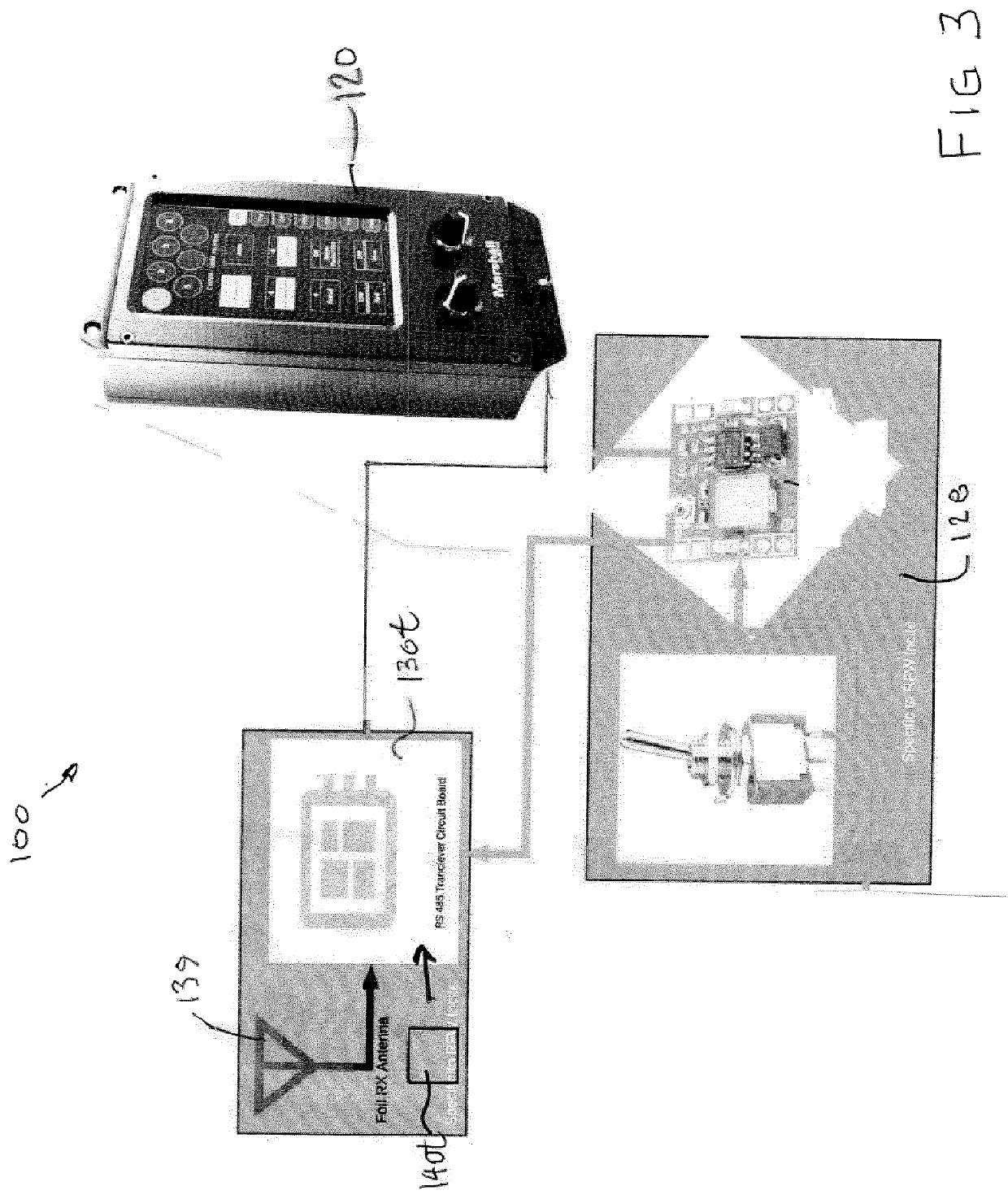Wireless camera system
- Summary
- Abstract
- Description
- Claims
- Application Information
AI Technical Summary
Benefits of technology
Problems solved by technology
Method used
Image
Examples
Embodiment Construction
[0048]Reference will now be made to FIGS. 1 through 16, which show an exemplary embodiment according to the present invention.
[0049]The applicant's solution to the aforementioned live event workflow issues is the InCite™ system for providing controls signals to a wireless remote camera, as indicated by the general reference numeral 100 in FIGS. 3 and 7. The camera control system 100 is for controlling various operating characteristics of the wireless video camera 110 mounted on a helmet 102. The wireless video camera 110 shown is a known device made and marketed by Marshall Electronics, Inc. of Torrance, Calif., USA, being preferably a Marshall™ Model V-1292B-2MP (59.94 / 29.97 fps)|V-1292-2MP (60 / 50 / 30 / 25 fps) 2.5MP Full-HD Color Board Camera).
[0050]The camera 110 is controlled using a remote control panel (RCP) 120, such as, preferably, remote control panel model CV-RCP-V2 Multi-Camera Control Touchscreen RCP, which serves as a signal generating device also manufactured and marketed...
PUM
 Login to View More
Login to View More Abstract
Description
Claims
Application Information
 Login to View More
Login to View More - R&D
- Intellectual Property
- Life Sciences
- Materials
- Tech Scout
- Unparalleled Data Quality
- Higher Quality Content
- 60% Fewer Hallucinations
Browse by: Latest US Patents, China's latest patents, Technical Efficacy Thesaurus, Application Domain, Technology Topic, Popular Technical Reports.
© 2025 PatSnap. All rights reserved.Legal|Privacy policy|Modern Slavery Act Transparency Statement|Sitemap|About US| Contact US: help@patsnap.com



